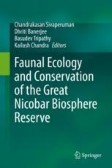Search
Search Results
-
Occurrence of the Indo-West Pacific starfish Luidia magnifica (Echinodermata: Asteroidea) in the Mexican Pacific and a possible introduction to the Caribbean region
The starfish Luidia magnifica (Asteroidea: Paxillosida: Luidiidae) is a multiradiate starfish that occurs throughout the Indo-Pacific. Since the...

-
Asteroidea and Ophiuroidea: Starfish and Brittle Stars
The asteroids and the ophiuroids are exclusively marine benthic animals, living at all depths and at all latitudes, from the mesolittoral zone to the...
-
Species composition of sea stars (Echinodermata: Asteroidea) in the Patagonian Argentinian deep sea, including seven new records: connectivity with sub-Antarctic and Antarctic fauna
The main target of this paper is to improve the knowledge of the species composition of sea stars in Patagonian Argentine deep sea reaching depths of...

-
Reproductive traits of the intertidal sea star Anasterias antarctica (Echinodermata: Asteroidea) from the Beagle Channel, Argentina
Sea stars display diverse reproduction strategies and development patterns. Anasterias antarctica (Lütken, 1857) is an oral-brooder species with a...

-
An evaluation of acoustic telemetry as a method to study the movements of Asteroidea (Asterias rubens)
BackgroundAcoustic telemetry is an important tool to study the movement of aquatic animals. However, studies have focussed on particular groups of...

-
Genetic evidence for multiple dispersal mechanisms in a marine direct developer, Leptasterias sp. (Echinodermata: Asteroidea)
Quantifying patterns of gene flow is critical for predicting the future resilience of local marine communities. Brooding species may be particularly...

-
Coral reef ecosystem–associated echinoderms (Echinodermata) at the Southern Mexican Pacific: species richness, distribution, and composition
Despite the high relevance of echinoderms in the Southern Mexican Pacific coral reef systems, there is no detailed analysis of their regional...

-
Carbohydrate-Binding Activities of Agglutinins in Invertebrates from the Sea of Japan
AbstractIn this study, activities and carbohydrate specificities of agglutinins in body fluids of invertebrates from waters of the Russian coast of...

-
First evidence of microplastics in the Marine Protected Area Namuncurá at Burdwood Bank, Argentina: a study on Henricia obesa and Odontaster penicillatus (Echinodermata: Asteroidea)
Large quantities of microplastics end up in the marine environment, constituting a potential threat for many organisms even in remote protected areas...

-
Changes in the Composition of Celomic Fluid Metabolites of the Black Sea Urchin Mesocentrotus nudus (Echinoidea) and the Starfish Asterina pectinifera (Asteroidea) under Conditions of Hypoxia Stress
AbstractThe composition of metabolites in the coelomic fluid of the starfish Asterina pectinifera and sea urchin Mesocentrotus nudus was studied...

-
Diversity and Distribution of Echinoderms of Great Nicobar Biosphere Reserve: Andaman and Nicobar Islands
Diversity and distribution of echinoderms were estimated on Great Nicobar Biosphere, Andaman and Nicobar Islands. The field surveys were conducted at...
-
Echinodermata
Die Echinodermata (Stachelhäuter) umfassen etwa 7000 rezente Arten und leben ausschließlich marin, vorwiegend im Benthos. Von den ursprünglich etwa...
-
Neoichnological analysis of sea stars in the deep sea near the Aleutian Trench: behavioral insights from in situ observations
The study of biogenic structures (e.g., lebensspuren) produced by benthic fauna on the seafloor provides invaluable information about the behavior of...

-
Learning without a brain: classical conditioning in the ophiuroid Ophiocoma echinata
Brittle stars (Class Ophiuroidea), like all echinoderms, lack centralized nervous systems, having instead five radially arranged nerve cords joined...

-
Energetics and development modes of Asteroidea (Echinodermata) from the Southwestern Atlantic Ocean including Burdwood Bank/MPA Namuncurá
Reproduction is a highly expensive process that during gonadal development requires an important supply of nutrients. The allocation of energy can...

-
Facilitating population genomics of non-model organisms through optimized experimental design for reduced representation sequencing
BackgroundGenome-wide data are invaluable to characterize differentiation and adaptation of natural populations. Reduced representation sequencing...

-
Unveiling the diet of the thermophilic starfish Ophidiaster ophidianus (Echinodermata: Asteroidea) combining visual observation and stable isotopes analysis
The starfish Ophidiaster ophidianus is an Atlanto-Mediterranean species protected under the EU’s Habitat Directive. Despite the wide distribution and...

-
EchinoDB: an update to the web-based application for genomic and transcriptomic data on echinoderms
BackgroundHere we release a new version of EchinoDB, EchinoDB v2.0 ( https://echinodb.uncc.edu ). EchinoDB is a database of genomic and...

-
Seagrass cover and associated macrobenthic marine invertebrates in Southern Philippines
In Southern Philippines where coastal research is scarce and hindered by safety and security concerns, the present study on seagrass assessment and...

-
Studying Echinodermata Arm Explant Regeneration Using Echinaster sepositus
Echinoderms are marine invertebrate deuterostomes known for their amazing regenerative abilities throughout all life stages. Though some species can...
